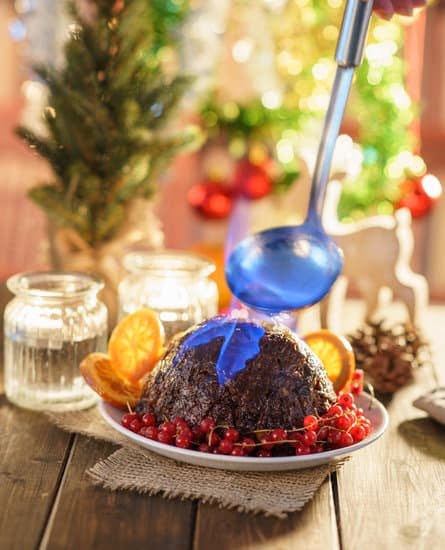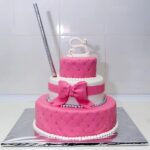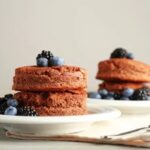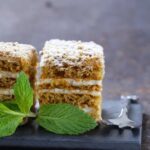Cake decorating is not just about adding frosting and sprinkles to a plain cake. It is an art form that requires patience, precision, and creativity. From choosing the right tools and equipment to mastering essential techniques, cake decorating can be both challenging and rewarding.
In this article, we will explore the step-by-step process of cake decorating and discover how you can take your skills to the next level. Whether you are a beginner or an experienced baker, these cake decorating steps will help you create stunning edible masterpieces that will delight both your eyes and taste buds.
In order to embark on your cake decorating journey, it is important to have the right tools and equipment. From spatulas for smoothing frosting to piping bags for intricate designs, having the proper tools will make all the difference in achieving professional-looking results. We will delve into the key tools and equipment that every cake decorator should have in their arsenal.
Before you can start decorating your cake, it is essential to prepare your canvas – the sponge itself. Achieving a level and crumb-free sponge is crucial for creating a flawless finish. We will share some essential tips on how to properly prepare your cake before moving on to the fun part – decorating. Whether you are baking from scratch or using a store-bought mix, these tips will ensure that you have a solid foundation for your decorative creations.
With the right tools and a leveled sponge in place, it is time to dive into the art of piping, frosting, and swirls. These essential techniques are at the heart of cake decorating and mastering them will allow you to create beautiful designs on your cakes.
We will provide step-by-step instructions on how to pipe intricate patterns, frost smoothly without any lumps or air bubbles, and create mesmerizing swirls that will impress anyone who sees (and tastes) your creations.
Join us as we delve into each step of cake decorating, from preparing your canvas to creating advanced designs that will make your creations truly stand out. Whether you are a professional or a novice, these cake decorating steps will help you develop your skills and allow your imagination to run wild. So, dust off your apron, grab your spatula, and let’s embark on this delightful journey of cake decorating.
Key Tools and Equipment
Cake decorating requires a variety of tools and equipment to achieve professional-looking results. Whether you are a beginner or an experienced decorator, having the right tools can make all the difference in your cake decorating journey. Here are some key tools and equipment that every cake decorator should have in their arsenal:
- Spatulas: Spatulas are essential for smoothing frosting, spreading fillings, and creating clean edges on cakes. An offset spatula is particularly useful for getting into tight corners and achieving smooth finishes.
- Piping Bags and Tips: Piping bags are used to pipe decorative designs and borders onto cakes. They come in various sizes and materials, such as disposable plastic or reusable cloth. Piping tips determine the shape and texture of the designs you create. Popular tips include round, star, leaf, and petal tips.
- Turntable: A turntable is a rotating platform that allows you to easily spin your cake while decorating it. It provides a smooth surface for even frosting application and precise piping work.
- Cake Leveler: A cake leveler is a tool used to trim off any domed or uneven tops of baked cakes, ensuring a level surface for stacking and decorating.
- Decorating Brushes: Decorating brushes come in various sizes and are used for applying paint or edible glaze to cakes, as well as adding details with food coloring.
- Rolling Pin: A rolling pin is crucial for rolling out fondant or gum paste to cover cakes or create decorative elements like flowers or ribbons.
- Cake Decorating Comb: A comb-like tool with different patterns helps create textured finishes on buttercream or whipped cream surfaces.
Having these tools will set you up for success in your cake decorating endeavors. Remember to invest in good quality equipment that will withstand frequent use and provide consistent results.
Additionally, it’s important to maintain proper hygiene when working with food items like cakes. Clean all your tools before and after each use, and handle them with clean hands or gloves to prevent contamination. By having the right tools and practicing good hygiene, you’ll be well-equipped to create beautiful and delicious works of art in the form of cakes.
Preparing Your Cake Canvas
Preparing your cake canvas is a crucial step in cake decorating, as it sets the foundation for a beautiful and professional-looking final product. Here are some essential tips to ensure that your cake is level and free of crumbs, providing a smooth surface for the icing and decorations:
- Leveling the Cake: A level cake is essential for achieving a polished finish. Start by placing your cooled cake on a flat surface and gently trim off any domed or uneven areas using a serrated knife. You can also use a cake leveler tool to slice off the top of the cake evenly. Take your time during this step to ensure that you have an even surface to work with.
- Crumb Coating: One of the secrets to achieving a flawless finish is applying a crumb coat. This thin layer of frosting seals in any loose crumbs and provides a smooth base for the final layer of icing.
To create a crumb coat, spread a thin layer of frosting over the entire surface of your leveled cake using an offset spatula or a butter knife. Make sure to cover every nook and cranny before refrigerating the cake for about 15-20 minutes to allow the crumb coat to set. - Chill for Easy Handling: Chilling your cake after applying the crumb coat not only helps it set, but it also makes it easier to handle during subsequent decorating steps. Place your crumb-coated cake in the refrigerator or freezer until it feels firm and slightly chilled to the touch. This will prevent the layers from shifting or breaking apart when you add more frosting or decorations later on.
By following these essential tips, you’ll be well on your way to creating beautifully decorated cakes with smooth and professional-looking finishes. Remember, taking extra care in preparing your cake canvas will result in an impressive final product that’s sure to delight both visually and in taste.
Crumb Coat
The crumb coat is an essential step in cake decorating that ensures a flawless finish. This technique involves applying a thin layer of frosting to seal in any loose crumbs before adding the final layer of frosting. Not only does it create a smooth surface, but it also helps the final layer adhere to the cake properly. Mastering the crumb coat technique is crucial for achieving professional-looking results.
To apply a successful crumb coat, start by leveling your cake layers and removing any domes or uneven edges. This will provide you with a stable base for frosting. Next, spread a thin layer of frosting over the entire cake using an offset spatula or icing smoother. Be sure to cover every nook and cranny, including the sides and corners.
Once the initial layer is applied, refrigerate the cake for about 15-20 minutes to allow the frosting to set slightly. This will help prevent any crumbs from getting mixed into the final layer of frosting. After chilling, apply a second layer of frosting, focusing on achieving an even coating and smoothing out any imperfections.
| Benefits of Crumb Coating | Tips for Success |
|---|---|
| – Creates a smooth surface for final decoration | – Use a steady hand while spreading the crumb coat |
| – Prevents crumbs from mixing into final layer of frosting | – Chill the cake after applying the initial crumb coat |
| – Helps final layer adhere properly | – Apply a second layer of frosting for better coverage |
Remember to use a light hand when applying the crumb coat to avoid ripping or tearing the cake. It’s important to maintain a steady pressure and smooth strokes to create an even layer. If any crumbs are visible after applying the second layer of frosting, you can use an offset spatula or bench scraper dipped in hot water to gently smooth them out.
Once your crumb coat is complete, you can proceed with adding your final layer of frosting and continue decorating as desired. The crumb coat not only enhances the appearance of your cake but also ensures that each slice looks neat and professional. So take your time with this important step and enjoy the satisfaction of a flawless finish.
Essential Techniques
Piping Techniques
Basic Piping
One of the essential techniques in cake decorating is piping. This involves using a pastry bag and different tips to create various designs on the cake’s surface. For beginners, it is recommended to start with basic piping techniques such as dots, lines, and rosettes. These simple designs can be easily achieved by applying steady pressure on the pastry bag while controlling the movement of your hand.
Basketweave Piping
Once you have mastered basic piping, you can move on to more intricate designs like basketweave piping. This technique creates a woven pattern that resembles a basket. To achieve this effect, use a basketweave tip and pipe vertical lines across the cake’s surface, alternating between thick and thin lines. Afterward, pipe horizontal lines across the vertical ones, weaving them through each other to create a woven appearance.
Frosting Techniques
Smooth Buttercream Frosting
A smooth buttercream frosting is essential for achieving a polished look on your cake. To create this, start with a crumb-coated cake (as discussed in section 4) and apply a thin layer of buttercream frosting over the entire surface using an offset spatula. Once complete, refrigerate or freeze the cake briefly to firm up the frosting before applying another layer for a smoother finish.
Ombre Frosting
Creating an ombre effect with frosting adds an element of visual interest to your cake decoration. Begin by dividing your buttercream frosting into separate bowls and coloring them with different shades of the same color. Using an offset spatula or piping bags fitted with different tips, apply each shade of frosting onto the cake in gradient layers. Blend the colors together for a seamless ombre transition.
Swirling Techniques
Two-Tone Swirls
To achieve a beautiful two-tone swirl effect, fill a piping bag fitted with a large star tip with two different colors of frosting. Apply both colors side by side inside the bag, ensuring they are evenly distributed. When piping, hold the bag perpendicular to the cake’s surface and apply even pressure while rotating your hand in a circular motion. The result will be a swirl with both colors seamlessly blended together.
Rosette Swirls
Rosette swirls are elegant and versatile decorating techniques that can be used to cover an entire cake or create floral designs as accents. Start by placing a large star tip in your piping bag and holding it at a 45-degree angle above the cake’s surface. Begin in the center of the desired area and pipe in a continuous spiral motion outward until you reach the desired size or cover the entire cake.
By mastering these essential techniques of piping, frosting, and swirls, you can take your cake decorating skills to new heights. Remember to practice each technique repeatedly to develop precision and control over your movements. With time and patience, you’ll be able to create stunning cakes that are not only visually appealing but also deliciously enjoyable.
Marzipan Magic
When it comes to cake decoration, marzipan is a versatile and delightful medium that can elevate your creations to the next level. Marzipan is a sweet almond-based paste that can be molded into various shapes and designs. It is commonly used in creating decorative elements like flowers, figures, and other intricate details for cakes.
To start working with marzipan, you will need a few essential tools. A rolling pin will help you flatten the marzipan to your desired thickness. You will also need sculpting tools or small kitchen utensils for shaping and sculpting the marzipan. Additionally, investing in food coloring gels or edible paints will allow you to add vibrant colors to your creations.
Before using marzipan, it is important to have a clean and dry work surface. Dusting your work surface with powdered sugar or cornstarch will prevent the marzipan from sticking. To create texture on your marzipan creations, consider using embossing mats or silicone molds for added dimension.
Once you have mastered the basic techniques of working with marzipan, you can move on to creating stunning fondant designs and sculptural cake toppers. Fondant is a pliable icing that can be rolled out into thin sheets and draped over cakes for a smooth finish. By combining fondant with marzipan decorations, you can achieve beautifully detailed cakes that are sure to impress.
Advanced Designs
Once you have mastered the essential techniques of cake decorating, it’s time to take your skills to the next level and create advanced designs that will truly impress. From intricate piping designs to gravity-defying structures, there are countless ways to push your creativity and challenge yourself in the world of cake decorating. In this section, we will explore some techniques and ideas for advanced cake designs.
Sculpted Cakes
One way to elevate your cake decorating skills is by exploring sculpted cake designs. Sculpting cakes allows you to move beyond the traditional flat canvas and create three-dimensional masterpieces that truly wow your audience. From replicating objects like guitars or animals to crafting unique shapes and structures, sculpted cakes offer endless possibilities for expression.
When attempting a sculpted cake, it is important to start with a firm foundation. Consider using foam or wooden supports for stability, especially when creating intricate or gravity-defying designs. To achieve smooth edges and realistic details, carve the cake while it is slightly frozen. This will prevent crumbling and make shaping easier. Don’t be afraid to experiment with different tools and techniques such as fondant or modeling chocolate for added texture and detail.
Hand-Painted Designs
Another way to take your cake decorating skills to new heights is through hand-painted designs. With this technique, you can transform a plain frosted surface into a work of art using edible paints or food coloring gels. Whether you want to create intricate floral patterns or replicate famous paintings, hand-painting adds a personal touch and allows for more artistic freedom.
To get started with hand-painted designs, ensure that your base coat of frosting is smooth and even. Sketch out your design lightly using food-safe markers before painting over them using a small brush or fine-tipped food-safe pens. Experiment with different painting techniques such as shading, blending, or stippling to create depth and dimension. Remember to work slowly and let each layer dry before adding more details.
Novelty Cakes
If you’re looking for a fun and challenging way to showcase your cake decorating skills, consider creating novelty cakes. These cakes are designed to resemble everyday objects or scenes and often involve a combination of sculpting, carving, and piping techniques. From camera-shaped cakes to book-themed creations, novelty cakes allow you to unleash your creativity and surprise your guests.
When making novelty cakes, it’s important to plan ahead and brainstorm ideas that suit the occasion or theme. Sketch out your design before starting and break it down into manageable steps. Use supports if necessary, especially for taller or larger structures. Don’t forget to pay attention to small details such as textures and colors to make the cake as realistic as possible.
Taking your cake decorating skills to the next level means embracing new challenges and pushing the boundaries of what you thought was possible. Whether it’s experimenting with sculpted cakes, hand-painted designs, or creating novelty cakes, advanced designs offer an exciting opportunity for growth and creativity in the world of cake decorating. So go ahead, challenge yourself, and let your imagination run wild.
Tips and Tricks for Troubleshooting
No matter how experienced you are in cake decorating, there are always times when mistakes happen. However, these mistakes can often be fixed with a few helpful tips and tricks. In this section, we will explore common mistakes that cake decorators encounter and provide solutions on how to fix them.
One common mistake is when the frosting starts to melt or bulge after it has been applied to the cake. This can occur due to warm temperatures or overmixing the frosting, causing it to become too soft. To fix this issue, try placing the cake in the refrigerator for a short period of time to allow the frosting to firm up.
If you are working in a warm environment, you may need to keep the cake chilled until serving time. Additionally, make sure not to overmix your frosting, as this can cause it to become too soft.
Another mistake that can occur is when air bubbles form in your fondant or gum paste while rolling it out. These air bubbles can create unsightly lumps and bumps on your cake’s surface. To fix this problem, use a small pin or toothpick to gently prick any air bubbles you see on the surface of the fondant or gum paste. Be careful not to press too hard and damage the cake underneath.
Lastly, uneven piping lines or messy handwriting can also be an issue for many cake decorators. One way to fix this is by using a decorating tip with a smaller opening for more precise piping lines. Alternatively, you can practice your handwriting on parchment paper before transferring it onto the cake using edible markers or food coloring pens.
By being aware of these common mistakes and learning how to fix them, you will be better equipped to handle any challenges that come your way while decorating cakes. Remember, practice makes perfect. Keep experimenting with different techniques and don’t be afraid to make mistakes – they can often lead you towards finding your own unique style in cake decorating.
Let Your Imagination Run Wild
In conclusion, cake decorating is an art form that allows you to let your imagination run wild and explore a multitude of creative ideas. With the right tools and equipment, you can transform a simple sponge cake into a visually stunning masterpiece. Preparing your cake canvas properly is crucial for achieving a level and crumb-free base, ensuring that your final design looks flawless.
The crumb coat is a secret layer that professionals use to provide a smooth surface for frosting and piping. This step ensures that your final decorations adhere properly and also helps in achieving a professional-looking finish.
Mastering essential techniques such as piping, frosting, and creating swirls will give your cakes that extra touch of elegance. These skills take time and practice to perfect, but with dedication and patience, you can create intricate patterns and designs that will amaze anyone who lays eyes on them.
For those looking to delve even further into the world of cake decorating, marzipan offers an opportunity to create gorgeous fondant coverings and sculptural cake toppers. Adding these beautiful elements will elevate your cakes to another level of sophistication.
As you continue to develop your skills, don’t be afraid to explore advanced designs. Take risks with more intricate patterns or experiment with different textures. This is where true creativity shines through, allowing you to push the boundaries of traditional cake decorating and develop unique masterpieces.
While it’s important not to be discouraged by mistakes along the way, it’s equally important to know how to troubleshoot common issues. Understanding common problems such as uneven coloring or cracked fondant will allow you to fix them quickly so that they don’t detract from the overall beauty of your creation.
Finally, never forget that cake decorating is an opportunity for self-expression. Let your imagination run wild as you dream up new themes, color schemes, and decorative elements for your cakes. Whether it’s recreating famous works of art or designing intricate floral arrangements – the possibilities are endless. Allow your passion for cake decorating to shine through and create edible works of art that are not only visually stunning but also a delight to the taste buds.
Frequently Asked Questions
What are the 4 steps in icing cake?
The four steps in icing a cake involve preparing the cake, crumb coating, frosting, and decorating. When preparing the cake, it is important to make sure it has fully cooled before starting the icing process. Next, a crumb coating is applied to help seal in any loose crumbs and create a smooth base for the final layer of frosting.
This involves thinly spreading a layer of frosting over the entire cake and allowing it to set. Once the crumb coat is set, the final layer of frosting can be applied using an offset spatula or piping bag to achieve desired designs. Finally, decorations, such as sprinkles or fresh fruit, can be added to complete the look of the cake.
What are the 3 tips for preparing to decorate a cake?
When preparing to decorate a cake, there are three essential tips to keep in mind. Firstly, gather all necessary tools and ingredients beforehand to avoid interruptions during the decorating process. This includes selecting appropriate piping tips, colors of frosting, and any additional decorative elements like edible pearls or flowers.
Secondly, ensure that the workspace is clean and organized so that you have enough room for all your equipment and can work efficiently without any unnecessary obstacles. Lastly, it is helpful to sketch out or visualize your desired design beforehand and plan out how you will execute it on the actual cake.
What does a beginner need for cake decorating?
For beginners interested in cake decorating, there are several basic tools needed to get started. An essential item is an offset spatula or palette knife for spreading icing smoothly on cakes and creating different textures or patterns in the frosting surface. Piping bags and various tips are also necessary for adding intricate designs with frosting onto cakes or cupcakes. A turntable can be helpful for smoothly rotating cakes while decorating them from different angles.
It’s also important to have a sturdy cake stand or board where finished cakes can be displayed and transported safely. Additionally, a basic set of food coloring gels will allow beginners to experiment with adding different colors to their frostings. Lastly, basic tools like a cake leveler, scraper, and brush can aid in achieving even cake layers and removing excess crumbs before icing.

Welcome to our cake decorating blog! My name is Destiny Flores, and I am the proud owner of a cake decorating business named Cake Karma. Our mission is to provide delicious, beautiful cakes for all occasions. We specialize in creating custom cakes that are tailored specifically to each customer’s individual needs and tastes.





